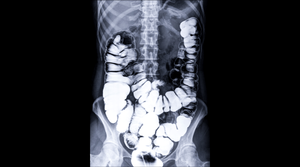How Osseointegration Is Improving Prosthesis Design
December 5, 2012
By developing prosthetic devices that rely on implanting electrodes directly in nerves and remaining muscle, Chalmers University researchers aim to provide amputees with greater control over prosthetic movements. |
Researchers at Chalmers University of Technology (Gothenburg, Sweden) are developing a new method for controlling prostheses for amputees that relies on the power of osseointegration.
Since the 1960s, prostheses have been controlled by electrical impulses in the muscles. However, the technology for controlling these prostheses has not evolved greatly since then. For example, while advanced electric hand prostheses are available, their functionality is limited because they are difficult to control. "All movements must by preprogrammed," remarks Max Ortiz Catalan, industrial doctoral student at Chalmers University. "It's like having a Ferrari without a steering wheel. Therefore, we have developed a new bidirectional interface with the human body, together with a natural and intuitive control system."
Uncomfortable and unpopular, current standard socket prostheses are attached to the body using a socket tightly fitted on the amputated stump. In order to pick up electrical signals to control the prostheses, electrodes are placed over the skin. However, when the skin moves, the signals change, since the electrodes move to a different position. In addition, the signals are also affected when amputees sweat, since the resistance on the interface changes.
In contrast, the new technology helps amputees to control artificial limbs much as they control their own biological hands or arms--by using their own nerves and remaining muscles. "Osseointegration is vital to our success," Catalan says. "We are now using the technology to gain permanent access to the electrodes that we will attach directly to nerves and muscles. In this project, the researchers are planning to implant the electrodes directly on the nerves and remaining muscles instead. Since the electrodes are closer to the source and the body acts as protection, the bioelectric signals become much more stable.
Osseointegration is used to enable the signals inside the body to reach the prosthesis. The electrical impulses from the nerves in the arm stump are captured by a neural interface, which sends them to the prostheses through the titanium implant. These are then decoded by sophisticated algorithms that allow the patient to control the prosthesis using thoughts.
In existing prostheses, amputees use only visual or auditory feedback. As a result, amputees must look at or hear the motors in the prosthesis in order to estimate the grip force applied to a cup if they wish to move it around. Using the new method, patients receive feedback as the electrodes stimulate the neural pathways to the patient's brain, just as the physiological system does.
About the Author(s)
You May Also Like


